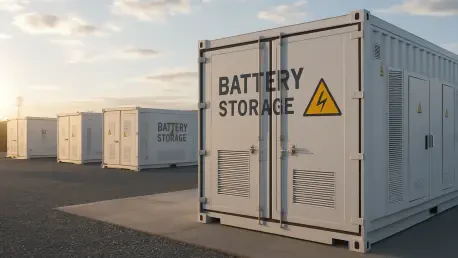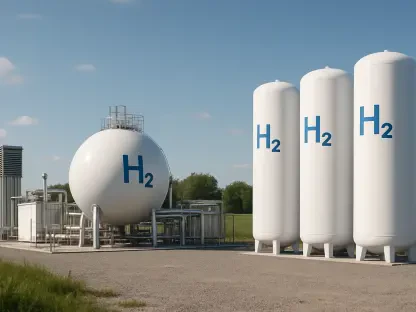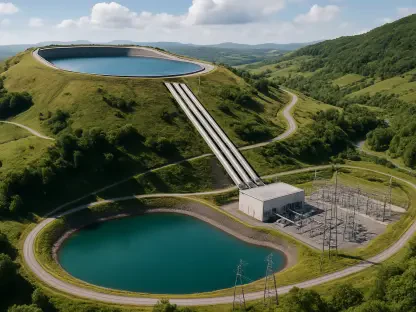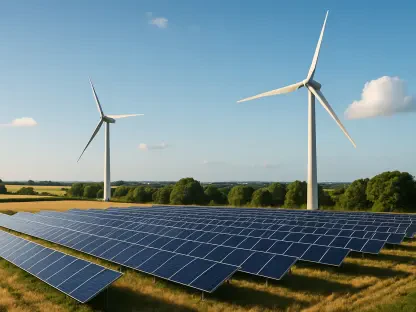I’m thrilled to sit down with Christopher Hailstone, a renowned expert in energy management and renewable energy. With his deep knowledge of electricity delivery and grid reliability, Christopher offers unique insights into how battery energy storage systems (BESS) are transforming the power landscape. Today, we’ll explore the critical role of BESS in stabilizing the grid, the challenges and innovations shaping their development, and what the future holds for this game-changing technology.
How would you describe a battery energy storage system to someone unfamiliar with the concept, and what’s its basic role in supporting the power grid?
At its core, a battery energy storage system, or BESS, is like a giant rechargeable battery that can store energy and release it when needed. It captures excess power during times of low demand—say, when the sun is shining bright on solar panels—and then discharges that energy during peak demand or when renewable sources aren’t producing. This helps smooth out the inconsistencies of renewables like solar and wind, which don’t generate power 24/7. For the grid, it’s a vital tool to balance supply and demand, ensuring we don’t have blackouts or overloads.
What makes BESS so essential for grid reliability in today’s energy landscape?
The push for renewable energy is changing how our grid operates. Solar and wind are fantastic, but they’re intermittent—solar drops off at night, and wind depends on weather. BESS steps in to store energy during surplus times and release it when there’s a shortfall. Beyond that, during peak demand hours, like hot summer afternoons when everyone’s cranking the AC, BESS can supply extra power to prevent strain on the system. It’s also a lifesaver during outages, providing backup to keep critical services running. Without BESS, integrating large amounts of renewables into the grid would be far more challenging.
Can you walk us through some of the standout benefits BESS offers to the power grid?
Absolutely. One big benefit is peak shaving—reducing the load during high-demand periods by releasing stored energy, which saves costs and prevents the need for expensive backup generators. Then there’s frequency regulation, where BESS helps maintain the grid’s stability by quickly adjusting to tiny fluctuations in power supply and demand. It also supports load shifting, moving energy usage to off-peak times, and provides backup power during emergencies. A lesser-known perk is how BESS can defer costly grid upgrades by managing local demand spikes, saving utilities and consumers money in the long run.
What are some of the biggest hurdles facing BESS technology right now?
There are a few key challenges. First, most current systems can only store energy for about two to four hours, which isn’t enough for prolonged low renewable output, like during a cloudy week for solar. Developers want six to ten hours, but the cost of longer-duration systems is a major barrier—it’s hard to justify the investment. Another issue is installing BESS in areas with outdated or congested transmission infrastructure. Charging these systems adds load to the grid, and if the local network can’t handle it, projects often fall apart because upgrading the lines is too expensive.
How are advancements in long-duration storage poised to change the game for renewable energy integration?
Long-duration storage is a huge leap forward. We’re talking about systems that can store energy for 12 to 100 hours, compared to just a few hours with current tech. This means BESS could cover extended periods of low renewable generation, like multi-day weather events, making renewables a truly reliable baseload power source. It’s a critical step toward a grid that can run predominantly on clean energy, reducing our reliance on fossil fuel backups and pushing us closer to carbon neutrality.
With all the buzz around new battery chemistries, what excites you most about alternatives to traditional lithium-ion batteries?
There’s a lot to be excited about. Sodium-ion batteries, for instance, use abundant materials, cutting costs and avoiding the supply chain issues tied to lithium and cobalt. Flow batteries are another standout, especially for large-scale projects, because of their 30-year lifespan and scalable design—you just increase the tank size for more capacity. Then there are iron-air and metal-air batteries, still in early stages, but promising for long-duration needs with cheap materials. Solid-state batteries also have huge potential for higher energy density, though manufacturing costs are a hurdle. These innovations are diversifying our options and making BESS more sustainable and accessible.
What role do you see smart grids playing in enhancing the effectiveness of BESS?
Smart grids are a perfect partner for BESS. They use digital tools like real-time monitoring, sensors, and predictive analytics to give utilities a clear picture of energy flow. This means BESS can be deployed more precisely—charging and discharging exactly when and where it’s needed most. For example, if a smart grid detects an upcoming demand spike, it can signal the BESS to release stored power proactively. This synergy boosts efficiency, cuts waste, and makes the grid more responsive to the dynamic nature of modern energy demands.
How important is regulatory support in speeding up the adoption of advanced BESS technologies?
It’s absolutely crucial. Right now, slow interconnection processes can delay projects for years, so streamlining those with standard protocols would get BESS online faster. Regulatory “sandboxes” for pilot projects are also key—they let us test new technologies without getting bogged down by red tape. Plus, aligning transmission policies with renewable growth ensures storage is placed strategically. Incentives like domestic manufacturing credits can help build local supply chains for alternative battery chemistries, reducing reliance on imports. Without strong policies, innovation risks stalling.
What’s your forecast for the future of battery energy storage systems in shaping a sustainable energy grid?
I’m very optimistic. Over the next decade, I expect BESS to become a cornerstone of our energy grid as costs drop, storage durations increase, and new chemistries scale up. We’ll likely see renewables paired with long-duration storage as the norm, drastically cutting fossil fuel use. Smart grid integration will make these systems even more efficient, and with the right regulatory backing, adoption will accelerate. Ultimately, BESS will be central to a resilient, sustainable grid that can handle the demands of a clean energy future with confidence.









